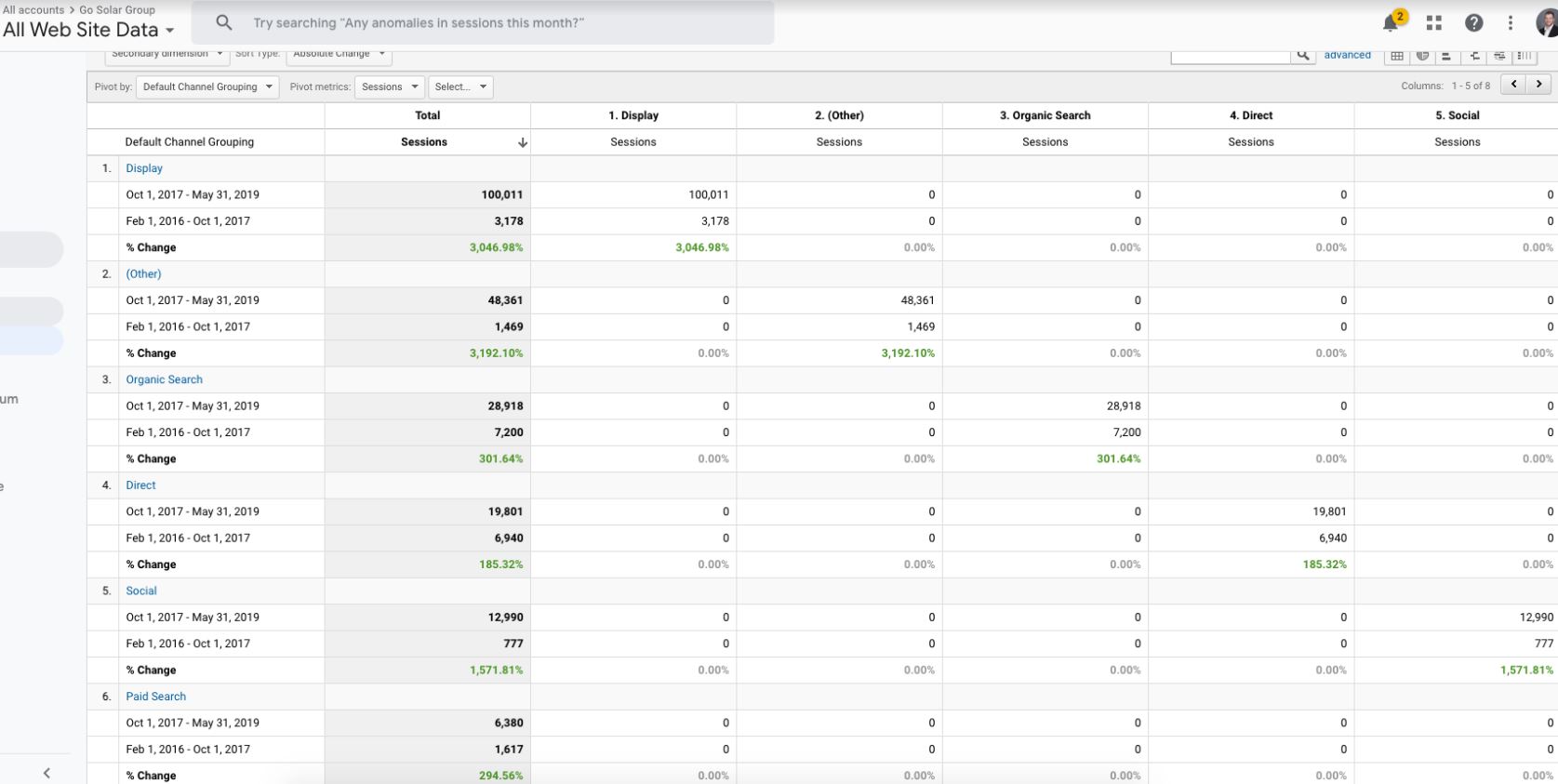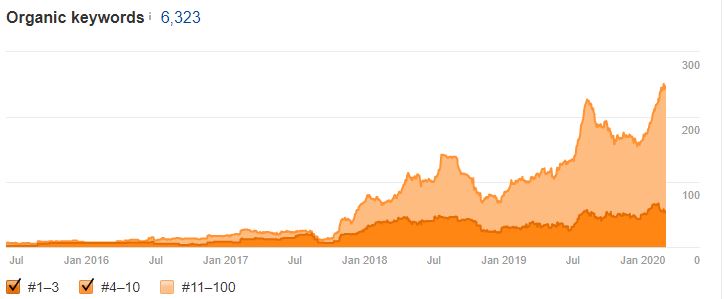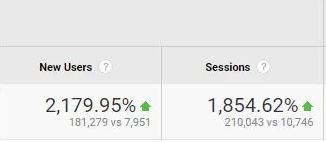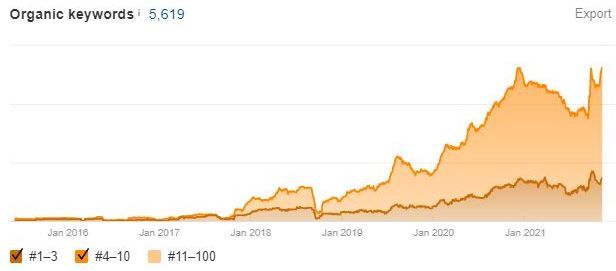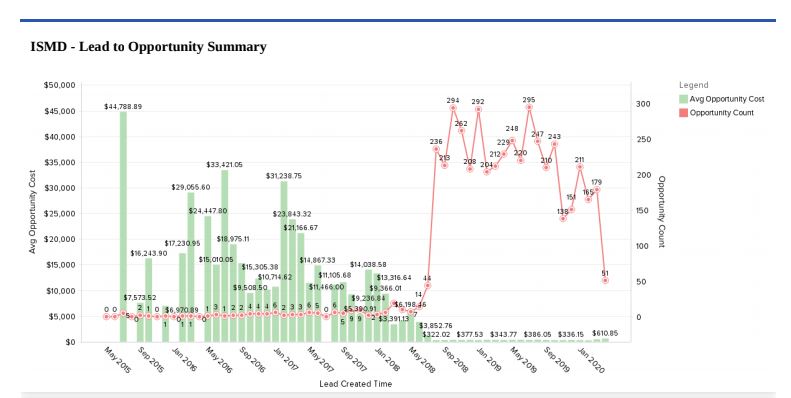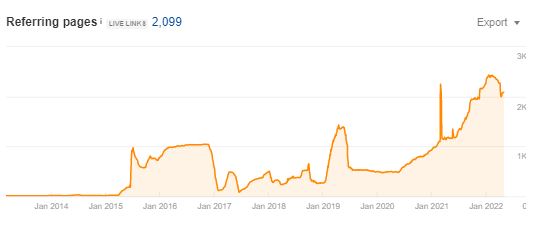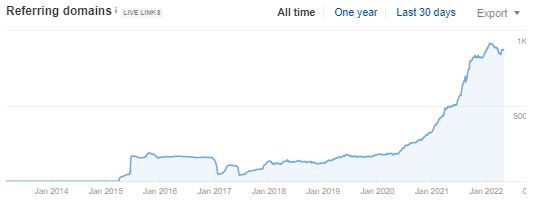SEO Services
Search Engine Optimization (SEO) Services, from a World-class Keyword Extraordinaire
What is SEO?
Anybody can practice SEO. However, mastery requires years of experience and continual education.
SEO is an abbreviation for the term search engine optimization. As a marketing practice that emerged at the turn of the millennium, SEO is a core component of many profitable organizations’ digital marketing strategies. As SEO strategies employed by businesses mature commensurately with the advances made in major search engine algorithms and artificial intelligence (AI) designed to enhance customer experience, staying abreast of SEO trends becomes increasingly important for modern marketers. As the most complex and most frequently changing practice of of modern digital marketing, there’s more to learn about the art and science of SEO than its two-decade existence implies.
How SEO Differs from SEM
SEO doesn’t just mean digital marketing. To understand why, we’ll define it in relation to its digital marketing counterpart, SEM (search engine marketing), which entails PPC (pay-per-click) is its largest component.
1. SEO Earns Customers Online. SEM Pays for Them
Effective SEO isn’t just about being at the top of search results, because many paid advertisements appear above organic search results for millions of different keywords. When you see an advertisement beneath your Google search term once results are returned for your query, that company is practicing SEM (pay-per-click), not SEO, because they’re leveraging Google Ads as a “paid platform” to get quick clicks, conversions, and customers.
2. SEO Pays for Marketing Labor. SEM Pays for Platform-generated Visibility
One of SEO’s key differences from SEM as a marketing practice is how the resources pooled into each respective strategy are categorized by the accounting department. A digital marketing budget devoted exclusively to paid ads on major platforms like Facebook and Google Ads is driven by SEM, whereas a digital marketing budget devoted to a graphic designer, webmaster, and blogger is likely more driven by SEO.
Thus, SEO is different from SEM because it relies primarily on paying marketers for work, whereas SEM relies primarily on paying online platforms for digital marketing ROI. While SEM often requires its practitioners to manage specific pay-per-click platforms like Google Ads or Facebook Business Manager, the key difference is that the value of SEM stems from how much money is pumped into paying to use a platform itself, not the specialist managing the platform. Thus, SEO is a byproduct of a company’s attempts at earned digital marketing exposure in the form of clicks, website views, backlinks, and organic leads generated. In this definition, the term “earned” describes what marketing employees earn for an organization independent of paid digital marketing platforms, the latter of which fall under the entirely different category of SEM.
3. SEO Generates Better Results In the Long Run. SEM Generates Weaker Results Over Shorter Periods of Time.
SEO is superior to pay-per click in that it generates much more reliable traffic, intent, and trust. As the inmost layer of SEM, Pay-per-click (PPC) is the least effective form of self-generated brand exposure, but more effective than sheer outbound marketing tactics given the targeting, control, and immediate ROI it can generate. The only way in which SEO is inferior to SEM is the amount of time it takes to scale and generate results. Like most things worth having, SEO requires plenty of patience and brutally hard work.
4. SEM Offers Greater Control Over Budgets and Accountability for Results
While SEM offers greater control over how customers are targeted, budgets pooled into specific ad campaigns, and accountability for overall digital marketing campaign results, it’s less effective as a marketing practice given its oftentimes indirect relevance the commodities of searchers’ interests, clicks, and attention.
Why is SEO Important?
When a marketer practices SEO, the objective is to place organizations, brands, products, and services in the most visible, relevant, and profitable online positions of search engines relevant to target customers. While social media platforms like Facebook and Twitter aren’t conventionally viewed as search engines, they are best categorized as search engines right alongside Google, Bing, and Yahoo, because social media platforms are both major conduits for boosting SEO and also engineered around searchers’ experience, albeit in ways different from conventionally defined search engines like Google.
Outbound (Interruption) Marketing vs. Inbound (SEO) Marketing
Anytime you see an advertisement, search result, or display ad you haven’t explicitly requested, you’re yet another victim of interruption marketing, which is commonly euphemized as “outbound” marketing to sound less unpleasant. The interruption marketing paradigm, which dominated nearly every medium from television to newspaper advertising through the 1990s, seeks to divert consumers’ attention into purchase behavior. Not only does the interruption marketing paradigm not work, it simply frustrates consumers.
Furthermore, tightening data protection laws, cookie opt outs, and other consumer rights in browsing the web further attenuate the impact of interruption advertising mediums. Still, despite the fact that the modern online marketplace is so competitive and chocked full of so many options for the consumer that the interruption marketing paradigm no longer works, companies still rely on this ineffectual marketing tactic. Consumers still interrupted by 4,000 – 10,000 unsolicited advertisements per day.
In contrast, SEO (and inbound marketing) gives someone what they’re searching for, and presents unique opportunity for brands to build delightful customer experiences. Inbound marketing involves creating content that contributes to these delightful experiences, which makes your target customer much more likely to buy from you, and come back to you for more in the future.
Okay, So SEO is about giving customers what they want instead of shoving un-solicited messages down their throats. Sounds easy enough.
Not so fast.
The ugly truth is that most consumers don’t know what they want. This is where SEO and inbound marketing become complex and demand many facets of skilled digital analysis and research. As a marketing tactic and set of strategies geared toward influencing marketing results online, SEO is frequently misunderstood as the only necessary component of a digital marketing strategy. If this was true, SEO would be able to build a brand entirely by itself.
While arguably more important than any other component of digital marketing, SEO should never be the only factor in building a brand online, because it neither builds brand perception in isolation from an interplay of other digital marketing tools, nor directly converts website traffic into customers. You can optimize your website to rank above competitors better than anyone, but that doesn’t mean your traffic will convert into sales.
4 Types of SEO and Examples
There are 4 main types of SEO generally accepted as the pillars of the discipline, and each must be understood before we delve into our SEO checklist in the next section: 1) On-page SEO, 2) Off-page SEO, 3) Technical SEO, and 4) Local SEO
1. On-page SEO
This first pillar of SEO can be described as the portion of SEO practices with which the end user actively engages, which includes the embedding of relevant keywords for the page’s topic, a website’s page speed, the quality and relevance of internal and external linking, front-end website development, seamless website navigation, and anything else positively affecting the online CX (customer experience).
2. Off-page SEO
Off-page SEO is the marketing effort that goes into widening visibility of the on-page elements with which searchers and website visitors interact. This includes digital public relations and backlink earning; social media marketing; and influencer marketing.
3. Local SEO
Depending on the percent of business you expect to generate via foot traffic vs. online, this type of SEO is critical for mom-and-pop shops that are new to the neighborhood and competing with big box retailers. Local SEO practices usually begin with listing your business in a customized Google My Business profile, which should include as many up-to-date locations as there are brick-and-mortar shops owned by your brand.
Local SEO also enhances the credibility of your business by showing potential customers the location, thereby enabling Google Reviews (which also improve visibility and web traction provided the sentiments expressed on the review platform are mostly positive). This kind of SEO adds an additional layer of complexity to the keyword research process outlined in the On-Page SEO section above.
4. Technical SEO
This aspect of SEO is usually the last of the 4 kinds of SEO marketers learn, and for good reason: it requires technical acumen not common to the average marketer. Technical SEO, much like on-page SEO, prioritizes the customer experience yet in a manner slightly different from on-page SEO elements.
E.g. your website’s speed and mobile responsiveness are aspects of how potential customers will respond to your brand, but are more deeply embedded and universal in the customers’ expectations of a marketing experience prior to engaging with your brand.
Some examples of technical SEO include optimizing content-to-code ratios and image tags for each page; back-end website development; compressing the size of website images so as to not slow down website functionality; and building cleanly-coded web pages.
The Beginner’s SEO Checklist
Whether you want to take a stab at SEO for your business before hiring an agency, or are curious about the basic components of a successful SEO strategy employed by SEO firms, this section will give you a bird’s eye view of the introductory steps to effective SEO practices.
1. Remember that SEO is a Marathon, Not a Sprint
The more sophisticated Google and other search engines become and the more competitive markets are, the longer it takes to implement a successful, profit-driving SEO strategy. In the earliest days of SEO, earning results that drove most of a brand’s sales could be easily generated easily within a 6-month window, sometimes sooner depending on the industry.
Now, the practice can take as many as 18 – 24 months to deliver comparable results. However, the reward is even more worthwhile than it used to be. Even in the earlier and simpler years of SEO lore (20 years ago) the industry’s leading expert on the subject at the turn of the millennium, Rand Fishkin, said it took him years to earn a top-ranking slot on Google for competitive keywords in the SEO training services industry for his company, Moz.
2. Understanding the Crux of SEO: Keywords
You’ll see that the bulk of this SEO checklist involves keywords. While this may seem one-dimensional, keywords are the primary mechanism by which search engine bots organize, index, and make sense of content and represent it accordingly in the SERPs, which is integral to the actual searchers’ experience.
Keywords are also as important to SEO as your keyboard is to using the internet. Without the input of language, using the internet and its search engines, becomes an impractical time-waster, since even voice search SEO technology relies on keyword data.
Know Which of the 2 Primary Keyword Strategies to Choose
There are 2 primary keyword strategies SEOs can choose from – branded keywords or generic keywords. While an effective SEO strategy sometimes involves targeting both (which can happen even with one keyword), we recommend brands start with one or the other to keep things simple. The strategy you choose depends entirely on the keyword difficulty/competition, query volume, and lexical keyword map of your business’s respective industry and or product suite.
Generic Keyword Emphasis
Generic keywords don’t involve the use of brand names. In using the solar industry to illustrate this, the term “solar panels for sale,” is a generic keyword because the searcher’s intent doesn’t revolve around finding a specific brand from whom they can buy these solar panels. Rather, it involves an emphasis on the product itself. Another way to describe these queries is as “brand-agnostic.”
Branded Keyword Emphasis
Unlike generic keywords, branded keywords involve the use of brand names. A branded keyword in the solar industry like “Tesla solar panels,” reveals that the searcher’s intent couples a particular solar panel brand with the solar panel itself. Unlike generic keyword SEO strategies, using SEO to rank for branded keywords is usually necessary in markets where one or two players own most of the query share for major search engines. Moreover, understanding the basis for brand-specific queries is vital to learning about target customers’ preferences, which can be parlayed into many other facets of product marketing. Sometimes branded keywords have more demand than generic terms. But this is rare. In summary of these 2 keyword strategies, effective SEO isn’t about ranking number 1 on Google. It’s about ranking number 1 on Google for the correct keywords. Make sure you pick the correct keywords, and stick to them steadfastly.
Know Your Long-tail Keywords
Once you’ve organized the correct assembly of generic and or branded keyword lists from as many different keyword research platforms as possible, it’s time to begin finding the long-tail keywords in these lists, because they should comprise the bulk of your content topics.
Long-tail keywords have more than 4 words, and have a higher click-through rate given the clarity and specificity of what’s revealed in their searcher’s intent. In contrast, 1-3-word broad-match keywords are better suited for SEM budgets and PPC-driven marketing strategies.
When you rely on long-tail keywords, the odds of hitting your target increase dramatically, because you’re aiming right at your target. You may have the greatest, most engaging content in the world, but if it isn’t targeting the most relevant, transactional, and long-tail keywords with the correct assembly of branded or generic keyword strategies for which you want your website to rank, your SEO efforts are useless.
Long-tail keywords are 70% of all search engine queries. Therefore, while these are harder to find and identify than their simpler broad match countertypes, there’s more earning potential in mastering them. Additionally, a monstrous 20 percent of queries punched into Google are completely unique and original, meaning they have only been searched for once – this means you have to think critically about which long-tail keywords you’ll target to get the best bang for your buck, and you’ll have to rely on your understanding of your target customer in these instances before resorting to keyword tools for assistance.
Educational vs. Transactional Keywords
Now that we’ve covered long-tail keywords, we’ll further split keyword types into educational and transactional camps.
Transactional Keywords
Transactional keywords are typically the most competitive queries in major search engines for a particular product or service. They include words like “buy,” “hire,” and other monetary terms indicative of purchase behavior, therefore oftentimes yielding a high cost per click for paid advertisements geared at these keywords.
Educational Keywords
Unlike transactional keywords, educational keywords indicate a potential customer is not yet in the purchasing stage of a sales funnel, and is still exploring their options. However, that doesn’t mean these keywords shouldn’t be part of your strategy. In fact, relying on them to produce content designed to nourish your leads into sales is critical for employing an effective SEO strategy. Once you rank for educational keywords, the funnel to the intended purchase behavior just needs to be longer, deeper, and ultimately spanning several more pages and clicks than what’s necessary for transactional keywords.
Once you have a large list of long-tail keywords, create broader categories of content clusters around them, and generate unique ideas for your editorial/publishing calendar (this is also a great way to create your website’s blog categories and subcategories).
However, don’t let the breadth of your findings detract from the depth of your content: Publishing exhaustive content on one topic increases your topical authority to both searchers and search engines alike, garnering greater visibility and trust for your website. When all else fails, have the empathy to put yourself in the customers’ shoes and enhance their user experience from that perspective. This, above all else, will always be what delivers value to Google and other major search engines and, therefore, value to you as a marketer practicing SEO.
3. Use Your Keyword Research Tools Appropriately
The first step to an effective keyword research strategy is to use a spread of different tools to corroborate your findings. Many of these great SEO keyword research tools are free. However, with low-cost tools comes required expertise in how these tools are used.
For example, if you elect to use Google as a keyword research tool, be sure to put your browser window in “Incognito” mode before punching in broad match terms in the search engine to yield their long-tail keyword stems. The Incognito Window allows you to use Google as a user with no collected search preferences in your cookies and cache, making your findings more objective and relevant to your potential buying base.
Target Keywords with the Right Degree of Competition or “KD”
A common abbreviation for “keyword difficulty,” KD usually falls on a scale of 1-100, and is made available to SEOs on various keyword research platforms. Don’t target product or service-related keywords that are too competitive and that you do not yet have the budget or traction to invest in.
Avoid Keyword Cannibalization
Keyword cannibalization involves 2 or more pages on one website targeting the exact same keyword. This isn’t just confusing for searchers on your website; it makes it difficult for the search engine bots to crawl and index your pages.
In order to avoid this problem, make sure you have an editorial calendar with updated information about the pages you’ve written and the keywords for which you’d like them to rank. If new information emerges about a topic upon which you’ve already published a blog post or landing page for, simply update the page instead of creating a new page covering the same keyword. An additional benefit in avoiding keyword cannibalization is that updating your content into a single page on one topic makes your content longer and more in-depth, enabling website visitors and search engines to view you as an authoritative source on the topic.
4. Avoid Over-Optimization Like the Plague
Don’t over-optimize your content: While you want search engines to crawl, index, and have the capacity to interpret your pages, creating content as if it is written only for the search engine bots crawling your web pages will hurt the user experience and detract from your organic rankings. Examples of over-optimization include keyword stuffing or directing all internal links to top-level navigation pages on your own website.
5. Understand SEO’s Role in the Interplay of Generative AI and SEM/PPC
Furthermore, avoid using AI-generated content for SEO Purposes. Google penalizes AI-generated content, stating explicitly that it’s against their Webmaster guidelines. These guidelines, as the canonized standard after which all search engine ranking factors are modeled, are paramount in establishing a profitable SEO framework for your business. When it comes to AI for SEO copywriting in 2022, work with the tools, but don’t expect them to do the work.
AI-generated content used to write blogs, articles, and other forms of online SEO copywriting designed to help websites, products, and services rank in the top results of search engines are still leagues beneath what a master SEO copywriter produces, and this is unlikely to change within the next decade, perhaps even longer.
As marketers shoulder greater burdens of responsibility, work longer hours, and are forced to stay abreast of ever-proliferating technologies and tools claiming to simplify marketers’ jobs, it makes sense that even some of the savvier marketers fall prey to the belief that they can hire a cheap AI bot to produce written content that helps them rank in search engines. Visit our blog post on AI content writing tools to learn more about this aspect of SEO.
Remember, this is just a basic checklist without the more granular and advanced details of practicing SEO. If it all sounds overwhelming, you can hire WordWoven to help: with more than a decade of experience in helping organizations with various SEO tactics and strategies, an investment in SEO with WordWoven is a cost-effective way to ensure long-term, enduring results. If you’re looking for more control over budget and are seeking more immediate results, visit our SEM and PPC services page.
SEM and PPC
How to Vet an SEO Firm Before You Hire Them
Unfortunately, like any other industry in which it takes time to generate tangible, profit-driving results, the SEO sector is full of agencies and consultants eager to swindle you out of your money. When it comes to cost in choosing an SEO agency, the up-front rate is irrelevant if the results never arrive.
Therefore, if you choose to hire an SEO agency or consultant for your brand, make sure they provide a verifiable track record for SEO performance. As an artform, SEO requires endless ideation for new, existing keywords and ideas, ideas being the backbone of all marketing, regardless of how much technical acumen someone has. SEO is a longer-term up-front marketing investment, and seldom generates immediate results even when completed by some of its most able practitioners.
As a baseline rule of thumb, if you’re hiring an SEO agency or SEO keyword research service, you shouldn’t expect to see a return on investment that moves the needle immediately. Moreover, in vetting SEO firms before making an official hiring decision, asking a trusted third party to vet the firm’s performance for its own website can be helpful.
However, when doing so, bear in-mind that newer organizations (like WordWoven) can’t possibly rank in the top search engine results organically if the brand hasn’t existed for at least a couple years. This doesn’t necessarily mean you shouldn’t hire a newer SEO company, but instead change which variables you use in your hiring criteria. E.g., does the newer SEO agency have skilled and experienced leadership who’ve been tested while working for other companies in similar capacities? Call these agencies and ask. This will enable your trusted third party to analyze SEO performance via online tools for your prospective account contact in roles similar to the ones for which you’re considering them.
What is the Cost of an SEO Agency?
The cost of an SEO agency varies drastically and hinges almost entirely on the industry, SEO agency expertise, account capacity, client expectations, competition, and needed SEO practices.
WordWoven’s SEO Services
By filling out the contact form on this page, or visiting our Contact Us page and submitting an inquiry requesting help with SEO, you’ll prompt us to begin a free, preliminary SEO audit for your website. The free SEO audit accomplishes 2 objectives: 1) inventory your existing SEO efforts to inform next steps and 2) provide a more accurate final quote for the suggested projects based on duration of time needed to complete them. While our pricing is subject to change and may fluctuate to accommodate your specific SEO needs, the below prices are accurate.
Service 1: The Complete Keyword Roadmap
The Complete Keyword Roadmap includes:
Comprehensive, scrubbed, and evergreen long-tail keyword list (with at least 100 keywords) based on correct keyword strategy (branded keywords, generic keywords, or both), worthwhile educational and transactional keywords, 20+ keyword research tools, appropriate keyword targeting based on existing market presence, and competitor analysis.
Price: $500
Service 2: 50 Viral, Keyword-based Content Ideas
While keyword research is challenging, the most difficult aspect of leveraging it is ideating the concepts needed to rank for the right keywords. Since this WordWoven SEO service requires the Complete Keyword Roadmap above, that is factored into the price of this second service. Each additional 50 viral content ideas costs $500.
Price: $1,000
Service 3: Service 1 and 2 with Mid-funnel and Bottom Funnel Keyword Lists
While service 2 focuses only on the top of your sales funnel with viral content ideas, service 3 provides an additional 100 keywords categorized to build a sales funnel on your website: 50 mid-funnel keywords and 50 bottom-funnel keywords.
Price: $2,000
Service 4: General SEO Practices
This long-term service involves fulfilling all the suggested strategies outlined in the preliminary SEO audit, which you can sign up for below. Minimum contract length is 6 months.
Price: $2,500 Per Month
Service 5: SEO Consulting
Visit our Marketing Consulting Services home base for an SEO consultant quote. Or bundle the AI and Generative Engine Optimization Marketing service with our SEO service for a reduced price on each.
Consulting
AI and GEO
SEO Performance for a Word-based World
View the performance screenshots below and click the ‘WordWoven’s Results’ button beneath them to see what our writing and content expertise accomplishes. From 5-figure percentage increases in marketing KPIs like SEO-based website lead generation to sales-qualified opportunity increases from inbound marketing campaigns.
Your Free SEO Consultation

James O'Connor is the Owner and Principal SEO, Digital Marketing, and Content Consultant of WordWoven. As a 4-year Forbes Communication Council inductee with 8 years of marketing management experience up to VP of Digital Marketing and agency CEO levels, he wields 11 years of total SEO and digital inbound marketing experience with lead generation, content writing, and performance marketing emphases. He's best known for building and leading marketing teams through complex industries and customer acquisition funnels, as well as generating 15 to 50x digital marketing and lead development KPI increases.

